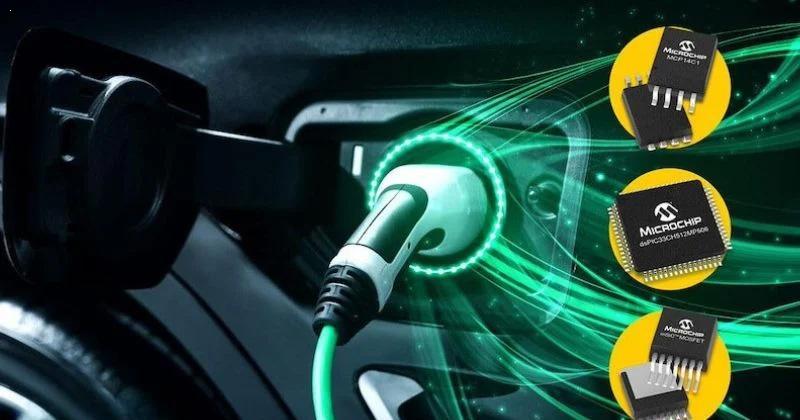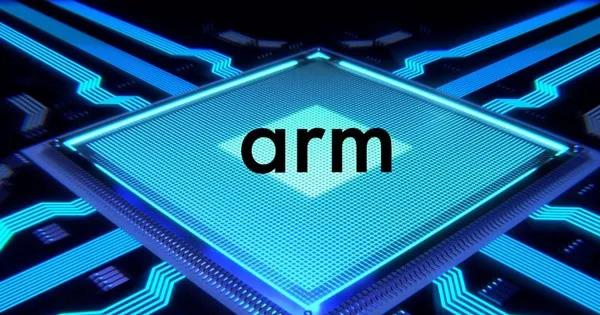
ST’s Full-Bridge DC Motor Driver Integrates Real-Time Diagnostics
STMicroelectronics has unveiled a new DC motor driver with real-time diagnostics to simplify integration with next-generation vehicle architectures.
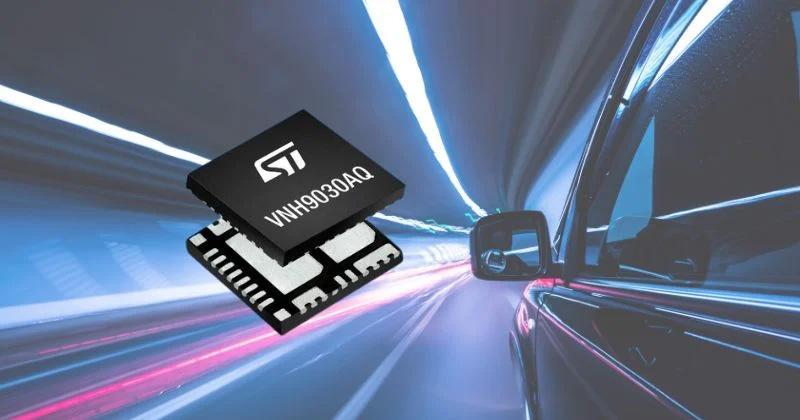
ST’s newest DC motor driver integrates current sensing and diagnostics on-chip. Image (modified) used courtesy of STMicroelectronics and Canva Pro (under license)
This article will take a closer look at ST’s new DC motor driver, the VNH9030AQ, and will report some of the key features and specs that make it a candidate for modern automotive applications. In addition, we will dig into the enabling technology to learn how improved efficiency and onboard diagnostic capability could provide much-needed resources to automotive designers.
Domain Versus Zonal Architectures
ST highly integrated the VNH9030AQ (datasheet linked) to meet the evolving needs of automotive architectures.
Traditionally, automobiles have leveraged a distributed architecture, where multiple ECUs operating standalone or with a central controller can perform all system functions. As the number of ECUs increases, however, the distributed architecture can quickly become overwhelmed because of the finite bandwidth on the central bus.
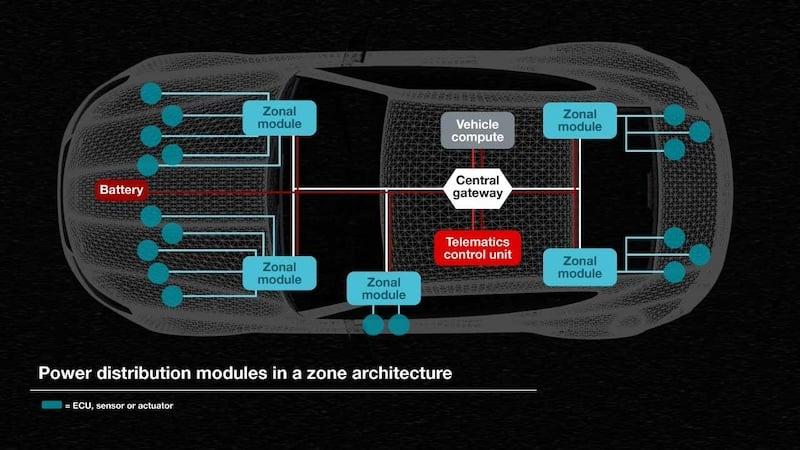
The zonal architecture leverages a central controller with several zone controllers to distribute processing power and simplify wiring. Image used courtesy of Texas Instruments
To circumvent this problem, designers now use a domain architecture, where a central controller can interface with multiple domain controllers to control common functions such as the powertrain, infotainment system, or power doors/lift gates. Information can then be distilled before traveling to the central controller, helping bandwidth use and improving performance. The drawback, however, is that the wiring can be complicated since systems in the same domain may be physically distant in the vehicle.
As a result, many automotive OEMs feel the next evolution is the zonal architecture. Compared to the domain architecture, the zonal architecture separates the vehicle into physical zones, where each zone has a common controller that controls multiple systems that are not necessarily alike. For example, a zone in the front driver-side of a vehicle may be responsible for providing power to the front left wheel, reading engine data, and controling the power seating. This architecture can simplify wiring and provide more modularity but requires a high level of integration since each zone has multiple subsystems.
Easy Integration With the New DC Motor Driver
To combat the potential complexity of zonal architectures, ST’s new DC motor driver focuses on packing as much as possible in a single device. The device's integrated diagnostics allow the parent controller to determine when a fault occurs and what type of fault it is to simplify system design. The device also includes built-in dissipation-less current sensing, enabling constant and efficient monitoring of motor currents.
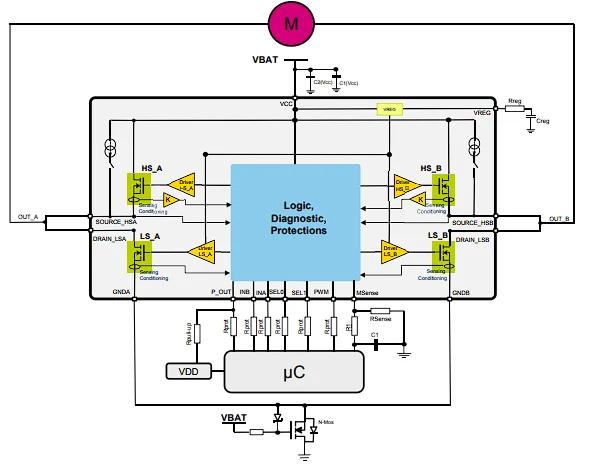
The typical application of the VNH9030AQ highlights the power MOSFETs, gate drivers, and internal logic circuits that allow easy integration with few external components. Image used courtesy of STMicroelectronics
The VNH9030AQ also features a low on-resistance of 30 mΩ thanks to ST’s VIPower M0-9 process. This process not only improves the on-resistance of the power MOSFETs but allows for lower voltage CMOS integration that can provide the built-in diagnostics feature.
Targeting Zonal Architectures and Beyond
While the features and specs of the VNH9030AQ make it a candidate for various applications, ST designed the device specifically with automotive zonal architectures in mind. The VNH9030AQ is in production now and is available for purchase. In addition, ST has released an evaluation board for designers who wish to test the device for their application.


